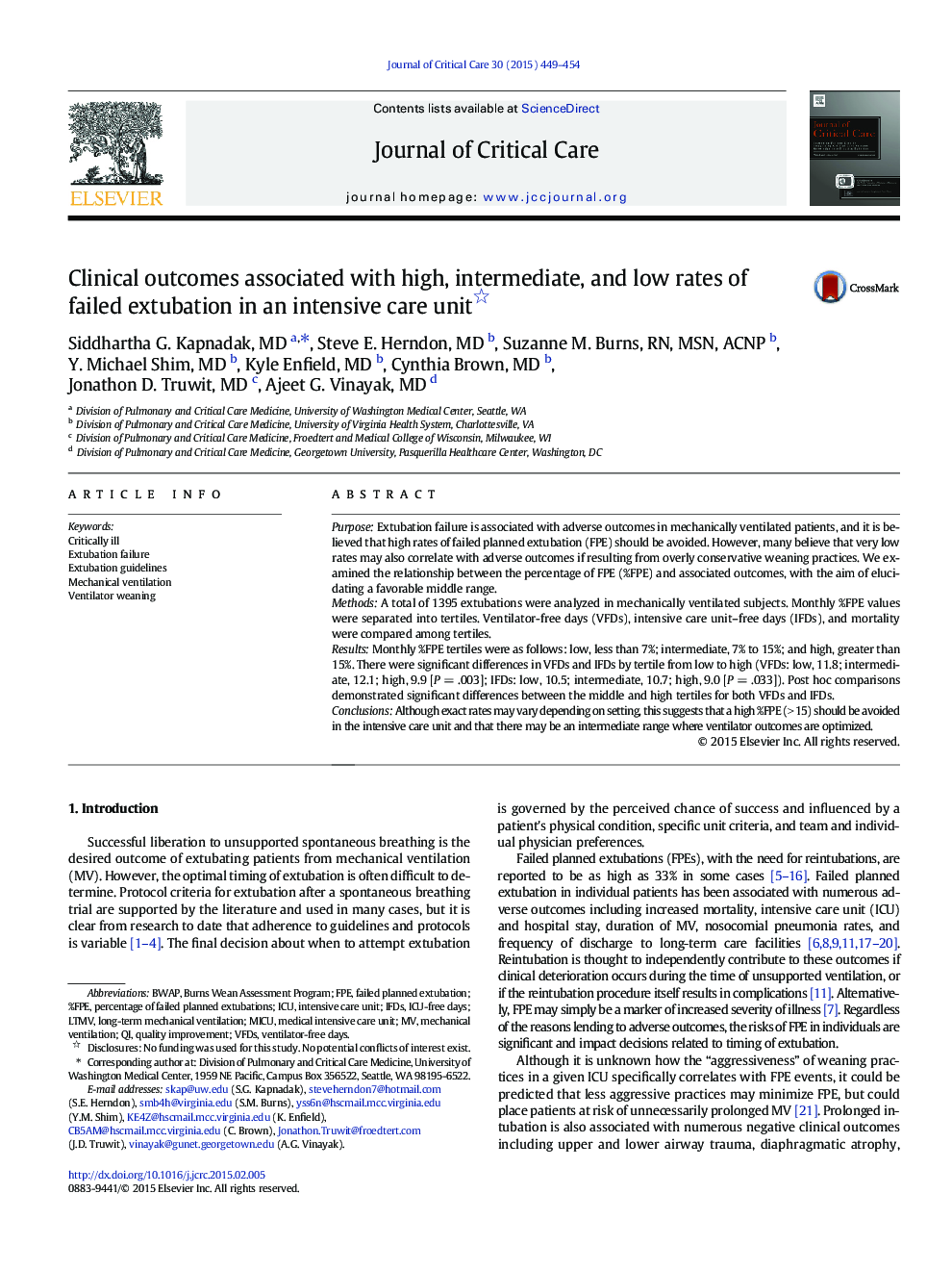| Article ID | Journal | Published Year | Pages | File Type |
|---|---|---|---|---|
| 5885569 | Journal of Critical Care | 2015 | 6 Pages |
PurposeExtubation failure is associated with adverse outcomes in mechanically ventilated patients, and it is believed that high rates of failed planned extubation (FPE) should be avoided. However, many believe that very low rates may also correlate with adverse outcomes if resulting from overly conservative weaning practices. We examined the relationship between the percentage of FPE (%FPE) and associated outcomes, with the aim of elucidating a favorable middle range.MethodsA total of 1395 extubations were analyzed in mechanically ventilated subjects. Monthly %FPE values were separated into tertiles. Ventilator-free days (VFDs), intensive care unit-free days (IFDs), and mortality were compared among tertiles.ResultsMonthly %FPE tertiles were as follows: low, less than 7%; intermediate, 7% to 15%; and high, greater than 15%. There were significant differences in VFDs and IFDs by tertile from low to high (VFDs: low, 11.8; intermediate, 12.1; high, 9.9 [P = .003]; IFDs: low, 10.5; intermediate, 10.7; high, 9.0 [P = .033]). Post hoc comparisons demonstrated significant differences between the middle and high tertiles for both VFDs and IFDs.ConclusionsAlthough exact rates may vary depending on setting, this suggests that a high %FPE (>Â 15) should be avoided in the intensive care unit and that there may be an intermediate range where ventilator outcomes are optimized.
